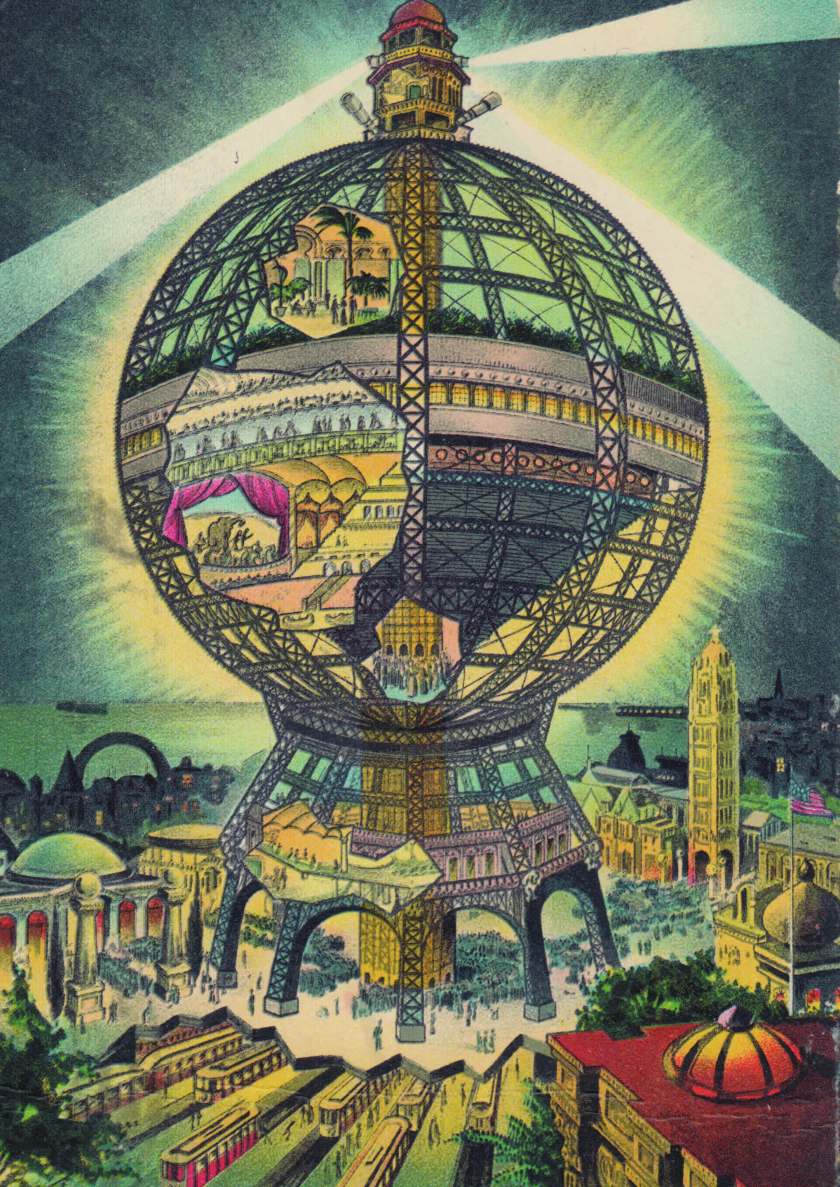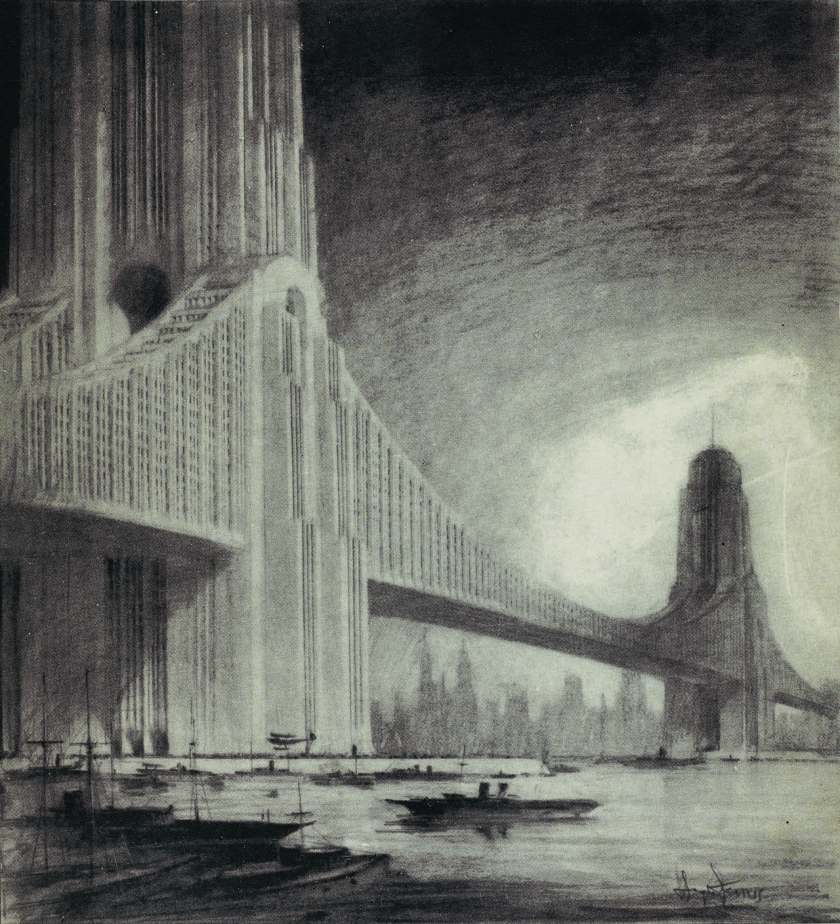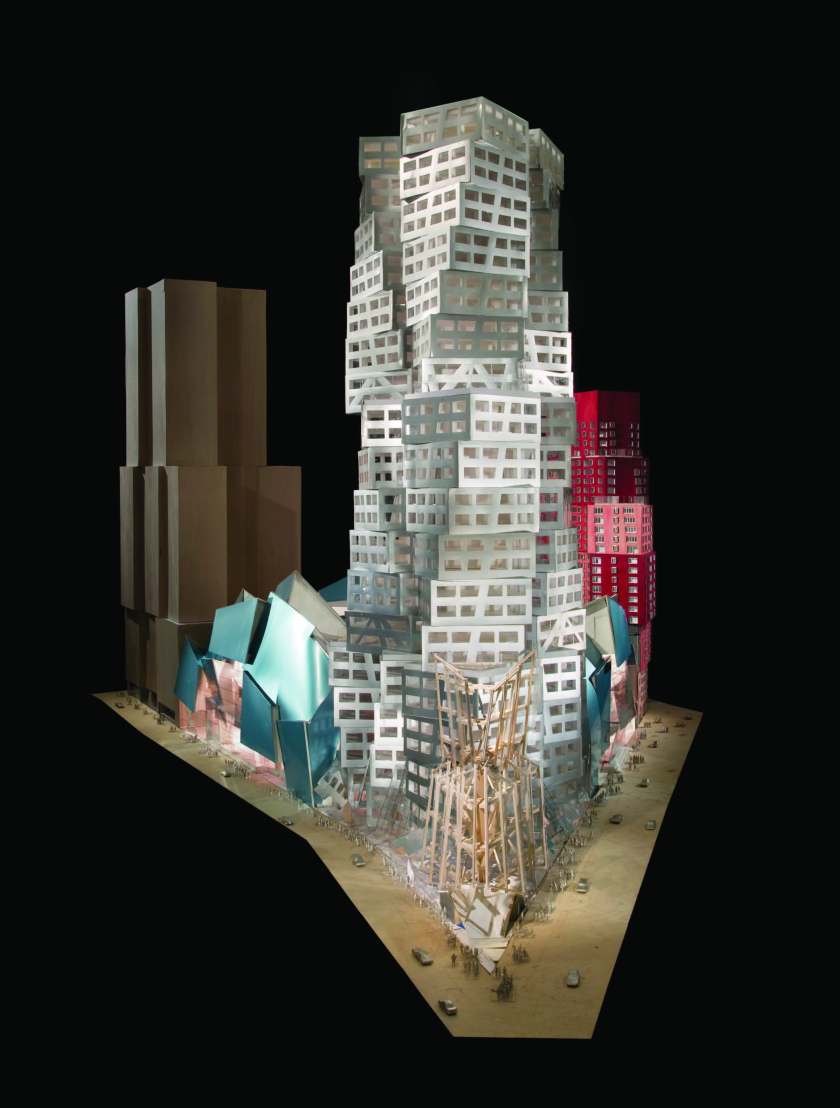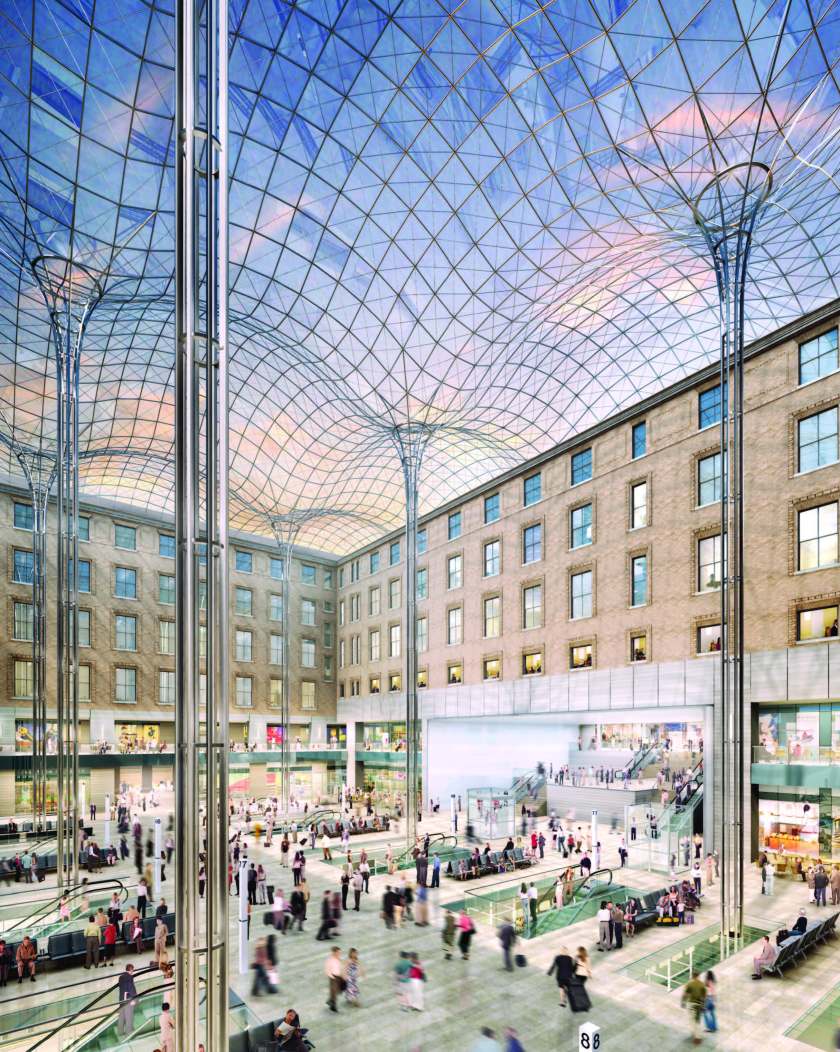
New York City has a skyline that is as historic as it is ever-changing. Even today, buildings are rising in the metropolis that will forever alter its profile. But there were many designs for skyscrapers and thousands of other New York City projects that never made it off the drawing board. A new book is shedding light on the buildings of New York that never were—from tiny projects designed by big-name firms to far-fetched concepts (see above) for now-iconic sites.
New York City currently boasts the tallest tower in the country, but the unbuilt designs in the book show that architects had plans to take it to greater heights—and even lower depths. Never Built New York includes almost 200 proposals for infrastructure, skyscrapers, public transport, entertainment venues, and vast areas of redevelopment throughout the five boroughs. The book features alternative designs for landmarks like the United Nations, Lincoln Center, Grand Central Terminal, Columbus Circle, and many more. Covering the city’s existence, the proposals stretch from its nascent growth to today, including rejected plans for projects just getting underway like the new Penn Station.
Spanning over 200 years, these designs are a historical dissection of contemporary architecture and provide the opportunity to review the city’s growth. It’s impossible to know how each proposal would affect New York today if they had been built, but Never Built offers readers a space to let their imagination run wild. What if Frank Lloyd Wright’s final design (a proposal for Ellis Island) had been brought to fruition? Would his masterplan for urban planning have unfolded in New York as well?
Some plans that may have seemed too forward-thinking at the time, don’t seem all that impossible now. For instance, Alfred Ely Beach’s system of airtight subway cars—propelled by atmospheric pressure—bares similarities to today’s transport startup Hyperloop. Then again, many of the pie-in-the-sky designs were exactly that: Willliam Zeckendorf’s idea for a rooftop airport—perched on steel columns 200 feet above street level, stretched from 24th street to 71st street and from Ninth Avenue to the Hudson River—is just one of those examples.
Showcasing how much the city’s two rivers and its grid structure came to simultaneously limit and foster innovative urban planning, Never Built New York is an homage to the 200 years of visionary architecture that didn’t come to be. A Columbia University architecture professor, Kenneth Frampton, described the book as “a fascinating scholarly tour de force, ultimately paralleling in its brilliant ambition the infinite spectrum of its subject matter.”






Currently on display at the Queens Museum, the designs featured in the book will be exhibited until February 18, 2018. Read more about that here. If you like what you see above and want to see more, you can purchase a copy of Never Built New York for $55 via Artbook here. If that doesn’t satiate your architectural appetite, another book featuring unbuilt designs from Los Angeles has been previewed here.
This article was featured in the InsideHook newsletter. Sign up now.





















